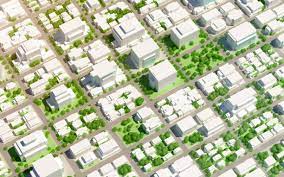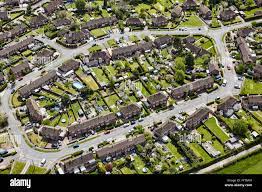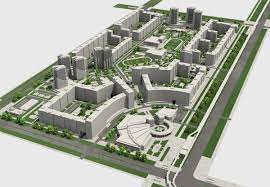Urban Planning
The Purpose, Aim and impact of Urban Planning
What is Urban Planning:
Urban planning is a multidisciplinary field that designs, regulates, and manages land use, as well as transportation networks, to ensure orderly development. It encompasses various aspects such as land use planning, zoning, infrastructure development, environmental sustainability, and social equity. Urban planners design functional, attractive, and sustainable cities and towns, considering population growth, economic development, transportation, environment, and community well-being. Thus, the goal is to create livable, efficient, and inclusive urban spaces.

The purpose of urban planning is multi-faceted and aims to achieve several key objectives:
- Sustainable Development: Therefore, it balances development with ecological preservation and resource efficiency to create sustainable communities.
- Efficient Land Use: Therefore, it optimizes land use to meet the needs of a growing population, allocating space for housing, commerce, industry, and recreation.
- Community Well-being: Planners strive to create communities that enhance the quality of life for residents. This includes considerations for public spaces, recreational areas, and social infrastructure that fosters a sense of community.
- Economic Development: Thus, fosters economic growth by locating commercial and industrial zones, attracting investment, and supporting job creation.
- Social Equity: Thus, it aims to reduce disparities and promote social inclusion by addressing affordable housing, accessibility, and public services.
- Transportation and Mobility: Consequently, design efficient, sustainable transportation to reduce congestion, enhance connectivity, and promote alternative modes.
- Crisis Preparedness: Thus, it considers disaster resilience and emergency response to prepare cities for natural disasters or unforeseen events.
- Cultural Development: Thus, it may preserve and promote cultural heritage, maintaining historical landmarks and cultural identity.
- Legal and Regulatory Framework: Therefore, it sets zoning, building codes, and other legal frameworks to development and protect us.

Urban Planning Aims:
Thus, it creates livable, sustainable, and inclusive cities and communities that adapt to change.
Therefore, the impact of it is significant and wide-ranging, influencing various aspects of a community and its residents. Here are key impacts of it:
Quality of Life of Urban Planning:
Good enhances quality of life by providing amenities, green spaces, culture, and recreation. Thoughtful planning contributes to a comfortable and attractive living environment.
Economic Development:
Consequently, strategic spurs economic growth by attracting businesses, creating jobs, and fostering commerce. Zoning and land use policies play a crucial role in this aspect.
Sustainability:
Thus, it contributes to environmental sustainability by promoting eco-friendly practices, green infrastructure, and efficient use of resources. This includes considerations for energy-efficient buildings, waste management, and sustainable transportation systems.
Infrastructure Efficiency:
Proper planning ensures the efficient layout of infrastructure such as roads, utilities, and public services. This helps reduce congestion, improve traffic flow, and enhance overall infrastructure performance.
Social Equity:
Thus, it can address social inequalities by ensuring access to affordable housing, education, healthcare, and public services. It aims to create inclusive communities where everyone has equal opportunities.
Transportation and Mobility:
Effective it can alleviate traffic congestion and improve transportation systems. Therefore, the provision of public transit options, pedestrian-friendly pathways, and cycling infrastructure contributes to efficient mobility.
Resilience to Disasters:
Thus, it can enhance a community’s resilience to natural disasters and other crises. Well-designed infrastructure and emergency response plans contribute to the safety and well-being of residents during adverse events.
Cultural Preservation:
Thus, it may preserve cultural heritage, maintaining landmarks and identity.
Housing Affordability:
Thus, it can influence the availability and affordability of housing. Policies that encourage diverse housing options and affordable housing initiatives contribute to meeting the housing needs of a diverse population.
Community Engagement and Participation:
Successful urban planning involves community engagement, allowing residents to have a voice in the decision-making process. This participation fosters a sense of ownership and pride in the community.

Impact of Urban Planning:
In essence, the impact of urban planning is far-reaching, shaping the physical, social, economic, and environmental aspects of cities and communities. Thoughtful and inclusive planning contributes to the creation of resilient, vibrant, and sustainable urban spaces.
The success of urban planning can be evaluated based on several key indicators and outcomes:
Efficient Land Use:
Successful urban planning is characterized by the optimal use of available land, avoiding sprawl and maximizing the utility of space for different purposes.
Infrastructure Development:
The presence of well-designed and well-maintained infrastructure, including roads, utilities, and public services, indicates the success of urban planning in supporting the needs of the community.
Economic Vibrancy:
A thriving local economy, with businesses flourishing, job opportunities increasing, and a diverse economic base, is a sign of successful urban planning that fosters economic growth.
Quality of Life:
Improved quality of life for residents, evidenced by access to green spaces, cultural amenities, recreational facilities, and a safe living environment, is a key measure of planning success.
Sustainability of Urban Planning:
Successful urban planning incorporates sustainable practices, such as green building standards, energy-efficient designs, waste management strategies, and environmentally friendly transportation options.
Social Inclusion:
A successful urban plan promotes social equity and inclusivity, ensuring that residents from diverse backgrounds have equal access to essential services, education, healthcare, and housing.
Traffic Management:
Effective urban planning results in well-managed traffic flow, efficient transportation systems, and the provision of alternatives like public transit, leading to reduced congestion and improved mobility.
Public Health:
The success of urban planning can be seen in the positive impact on public health, with walkable neighborhoods, access to recreational spaces, and initiatives that encourage a healthy lifestyle.
Cultural Preservation:
A successful urban plan recognizes and preserves cultural heritage, including historical landmarks and cultural districts, contributing to a sense of identity and community pride.
Resilience to Disasters:
Cities that successfully integrate disaster resilience measures into their planning are better equipped to withstand and recover from natural disasters or other crises.
Community Engagement:
Successful urban planning involves the active engagement of the community in decision-making processes, ensuring that residents’ voices are heard and considered in shaping the urban environment.
Housing Solutions:
The success of it is reflected in housing solutions that address the diverse needs of the population, including affordable housing options and a range of housing types.

Success of Urban Planning:
Assessing the success of urban planning requires a holistic view, considering economic, social, environmental, and cultural factors. Ongoing monitoring, community feedback, and adaptation of plans to changing conditions contribute to sustained success in urban planning.
It faces several challenges, often arising from the complex and dynamic nature of cities. Some of these challenges include:
Rapid Urbanization:
The rapid growth of urban populations can outpace planning efforts, leading to unplanned and informal settlements, inadequate infrastructure, and increased pressure on resources.
Infrastructure Deficits Urban Planning:
Insufficient or outdated infrastructure can hinder urban development. Issues such as inadequate transportation networks, water supply, sanitation, and energy services can pose significant challenges.
Land Use Conflicts:
Balancing competing interests for land use, such as residential, commercial, and industrial purposes, can lead to conflicts. Zoning regulations and land-use planning must navigate diverse community needs.
Housing Affordability Urban Planning:
Providing affordable housing options in rapidly growing urban areas is a persistent challenge. Rising housing costs and limited affordable housing availability can lead to housing crises.
Urban Planning Sustainability:
Urban planning faces the challenge of mitigating environmental impacts, including air and water pollution, loss of green spaces, and the ecological footprint of urbanization.
Social Urban Planning Inequality:
Despite efforts to promote inclusivity, urban planning can face challenges in addressing social inequality, with marginalized communities often bearing the brunt of inadequate services and infrastructure.
Transportation Congestion of Urban Planning:
Urban areas often grapple with traffic congestion and inadequate public transportation systems. Planning for efficient, sustainable, and accessible transportation remains a constant challenge.
Climate Change Resilience:
The increasing frequency and intensity of extreme weather events require urban planners to integrate climate change resilience into their designs, considering factors such as sea-level rise and changing weather patterns.
Bureaucratic Hurdles:
Consequently, complex bureaucratic processes and regulatory frameworks can slow down the implementation of urban plans, delaying essential projects and hindering adaptability to changing circumstances.
Public Engagement:
Ensuring meaningful public participation in the planning process is a challenge. Thus, engaging diverse communities in decision-making requires overcoming communication barriers and fostering a sense of inclusivity.
Globalization Impact:
Thus, the interconnectedness of cities in the global economy poses challenges, including increased competition for resources, vulnerability to economic downturns, and the potential for displacement of local businesses and communities.
Technological Advancements:
While technology can enhance urban planning, the rapid pace of technological change poses challenges in terms of planning for and integrating new technologies effectively.
Urban Planning Strategies:
Consequently, addressing urban challenges requires collaboration, innovation, and flexibility.

Collusion:
In conclusion, it is a critical discipline that shapes the present and future of our cities. Thus, it plays a pivotal role in creating sustainable, efficient, and inclusive urban environments.
Successful urban planning not only optimizes land use and infrastructure but also enhances the overall quality of life for residents. Thus, the impact of urban planning extends beyond physical structures; Thus, it influences the way communities interact, thrive, and adapt to changing circumstances.
So, navigate the challenges, it requires a holistic and adaptive approach. Thus, it necessitates collaboration among diverse stakeholders, active community engagement, and a commitment to sustainability. Urban planning remains essential for creating resilient, vibrant, and livable cities for future generations.
